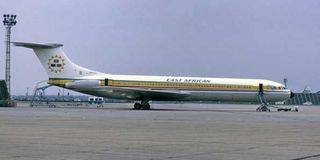Regional lawmakers want East African Airways revived

What you need to know:
- The joint airline would enable the region to tap more revenues as the tourists’ arrivals and intra-regional connections would be made easier.
Arusha. Regional legislators are calling for the revival of the East African Airways (EAA) so as to consolidate the leading foreign exchange earning sector.
The joint airline would also enable the region to tap more revenues as the visitors’ arrivals and intra-regional connections would be made easier.
“There is need to revive the EAA to tap more revenues from the tourism sector,” said Mr Kennedy Mukulia, the East African Legislative Assembly (Eala) member from South Sudan.
He told the House, currently holding its session in Arusha, that the region needed a single consolidated airline in order to strengthen its aviation industry.
He lauded measures taken by Tanzania and Uganda to revive their airlines, saying the tourism sector would be the main beneficiary.
“Kenya has the strongest airline (KQ) in the region while RwandAir is doing well. Shouldn’t we start thinking of reviving EAA?” he asked.
EAA was an airline jointly run by Tanzania, Uganda and Kenya. It was set up in January, 1946 and started operations the same year.
The corporation was dissolved in February 1977 due to deteriorating relations between the three states, followed by the collapse of the former East African Community (EAC).
Mr Abdikadir Aden (Kenya), beside forming a joint airline, argued that the bloc should embrace the single tourism visa.
“Implementation of the single tourism visa is long overdue,” argued the legislator who is also Eala’s chairperson of the General Purpose Committee.
He added that the arrangement would set in a mechanism for tourism revenue sharing among the six partner states.
The MPs’ remarks were echoed by Kenya’s cabinet secretary for EAC, Mr Adan Mohamed, who said the region needed to focus more on “connectivity to spur tourism”.
Dr Abdullah Makame (Tanzania) called for the speedy conclusion of the EAC Protocol on Tourism and Wildlife which has been on cards for years.
Discussion on the tourism potentials for the region followed tabling of an Oversight report on ‘Performance of the Tourism Sector’ before the House.
According to the report, tourist arrivals in the EAC nearly doubled from 3.5 million in 2006 to 5.7 million in 2017.
Although perceived to be low, tourism contributed an average of 18.8 per cent to EAC total exports and accounted for an average of 8.8 of GDP for 2017.




